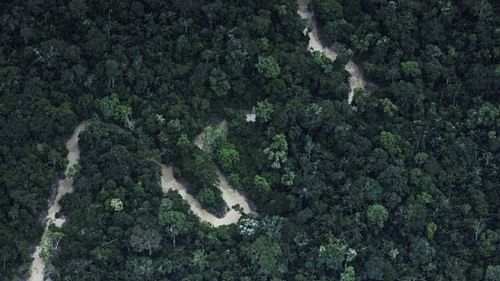
Tropical Forests.
Credit: Reuters file photo
By Meghan Bartels for Scientific American
Climate change is already making a small proportion of tropical tree leaves so hot that their photosynthetic machinery bakes and breaks, according to new research.
The study, published on Wednesday in Nature, finds that even when the surrounding air is significantly cooler than the leaves themselves, some 0.01 percent of individual leaves can reach a critical temperature at which the enzymes required for photosynthesis go through a process called denaturation—the same type of irreversible change that egg proteins in cake batter undergo in the oven. “It’s put some really hard numbers to what we already know intuitively: that it is getting too hot for trees and for tropical forests,” says Stephanie Pau, a global change ecologist at Florida State University, who was not involved in the new research.
Although only a small proportion of leaves are currently reaching this feverlike state, study co-author Christopher Doughty, an earth systems scientist at Northern Arizona University, says the findings are still starker than he’d expected. “It’s pretty rare that these leaves will get that hot right now,” he says. “But it was actually surprising that any of them got to that point because it’s quite a bit above air temperature.”
Another reason for concern, Pau says, is that tropical forests are crucial for carbon storage and biodiversity—and they’re already plenty threatened by deforestation. If enough leaves on a tree die, so will the tree itself, which means rising temperatures could chip away at these forests.
The new research consisted of three parts. First, the scientists reviewed experiments that have sought to understand what happens to individual leaves as temperatures rise. Then they consulted satellite data revealing local temperatures. Finally, they built a computer model to understand how tropical forests might respond as global temperatures continue to rise.
Studying how warming temperatures affect individual leaves is tricky work, Doughty says. A few studies have tackled the problem, however, for a range of tropical tree species at differing locations and for varying temperature increases. Together those experiments helped the team behind the new study characterize the temperature at which photosynthesis generally stops in a tropical tree’s leaf: around 46.7 degrees Celsius.
(That temperature is similar but a little lower for trees found at higher latitudes, Doughty says. For this study, the scientists decided to focus on tropical forests in part because of their crucial role in carbon cycling, as well as the fact that temperatures are generally higher in the tropics and vary less over the course of a day or a year, whereas regular temperature fluctuations can protect temperate trees.)
Next, the researchers turned to data gathered by the ECOsystem Spaceborne Thermal Radiometer Experiment on Space Station (ECOSTRESS), a sensor that is mounted on the outside of the International Space Station and began work in 2018. The scientists used data running through 2020 and hope to revisit this research with newer information.
Lower-resolution instruments essentially take the average temperature across a swath of forest, yet ECOSTRESS provides a more detailed view of canopy temperatures. That’s crucial for this work, Doughty says, because it identifies the tiny patches where leaves might be reaching the critical temperature at which their photosynthesis shuts down. “It’s not really the average temperature that matters,” he says. “Averages are going to mask all of those really hot temperatures and those really hot leaves.”
Finally, the researchers built a computer model to try to understand how quickly soaring temperatures might kill tropical trees. They found that a tipping point could occur when local average temperatures rise by about four degrees C. That said, Doughty notes that modeling is tricky work with a number of big questions involved. For one, scientists know that photosynthesizing leaves cool the air around them, so as they die off, neighboring leaves’ temperatures rise more rapidly. But how quickly this feedback escalates remains unclear. And at least some tropical trees may be able to acclimate to the heat and photosynthesize at higher temperatures, Pau says.
Still, Pau adds that the new study is an important look at the risks tropical forests face. “I thought it was really exciting,” she says. “This study has put some hard numbers on what we can expect in the future and the current status of how close tropical forests are to these critical thresholds.” Pau also notes that even before leaves (and eventually whole trees) die, photosynthesis will slow down as temperatures creep upward. “It doesn’t need to get that hot for us to see a massive shift in these really large earth-system processes like carbon and water cycling,” she says.
Doughty, however, sees room for hope in the research. That four-degree-C rise, he says, is what we can expect if global leaders take no measures to counter climate change. But reducing carbon emissions and limiting deforestation could take the worst-case scenario out of the running. “It’s not like the tropics are doomed, and there’s nothing we can do about it,” he says.
(Meghan Bartels is a science journalist and news reporter for Scientific American based in New York City.)